Bright and cheerful, Fuchsia plants are versatile perennials that thrive in patio containers and excel as specimen plants in beds and borders. They can even be used to create a colourful flowering hedge. Native to South Africa where they are pollinated by hummingbirds, Fuchsias are loved for their elegant, ballerina-like blooms. Whether you prefer a cascade of tumbling double flowers for your hanging baskets or upright standards for your patio, here’s everything you need to know about growing Fuchsias.
The best Fuchsia varieties
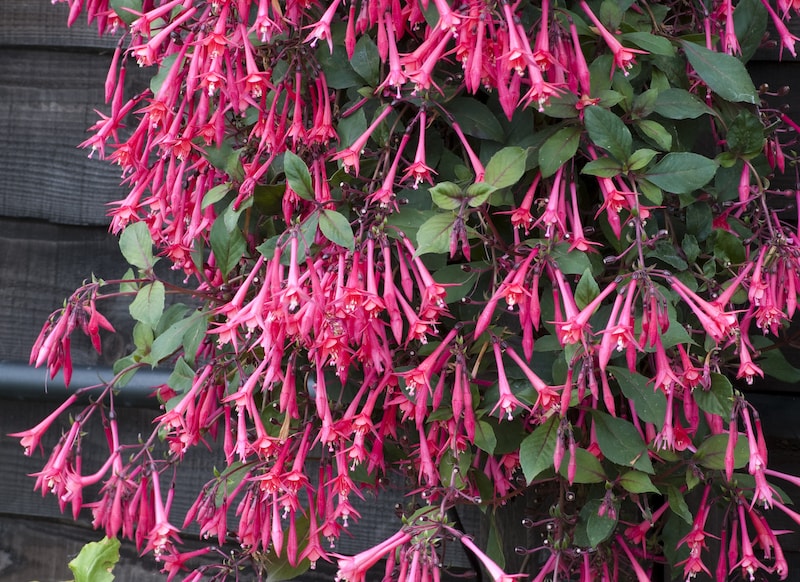
Image: Fuchsia ‘Eruption’ from Suttons
Fuchsias can be tender or hardy, and come in a wide range of striking colours. If you’re looking for the perfect plant for your garden, here are some of the main types to consider:
- Standard Fuchsias. Standards are attractive pre-trained plants, arriving with a single tall stem topped with a ball of top growth. Go for Fuchsia ‘Elma’ for pink upswept flowers, or Fuchsia ‘Angela’ for two-toned purple and red flowers.
- Dwarf growth habit. Fuchsia ‘Tom Thumb’ is a very compact variety that grows to just 30cm. Ideal for containers or window boxes.
- Hanging basket. The huge double blooms of Fuchsia ‘Swingtime’ cascade over the sides of your baskets. For masses of smaller hot pink flowers, go for Fuchsia ‘Eruption’.
- Hardiness. Fully hardy, Fuchsia ‘Hawkshead’ has pure white flowers that beautifully highlight a dark area of the garden. Fuchsia ‘Riccartonii’ is hardy and very vigorous, reaching a mature height of 3m and spread of 2m.
- Large flowers. If you’re after huge blooms, go for a giant flowered Fuchsia collection containing pinks, purples and blues. The flowers of Fuchsia ‘Pink Elephant’ start like rose buds before swelling open to reveal layers and layers of ruffled pink petals.
- Scented flowers. Fuchsia arborescens produces fragrant pompoms of tiny lilac flowers followed by attractive purple berries that have a delicious flavour. This evergreen reaches 180cm tall at maturity.
How to plant Fuchsias
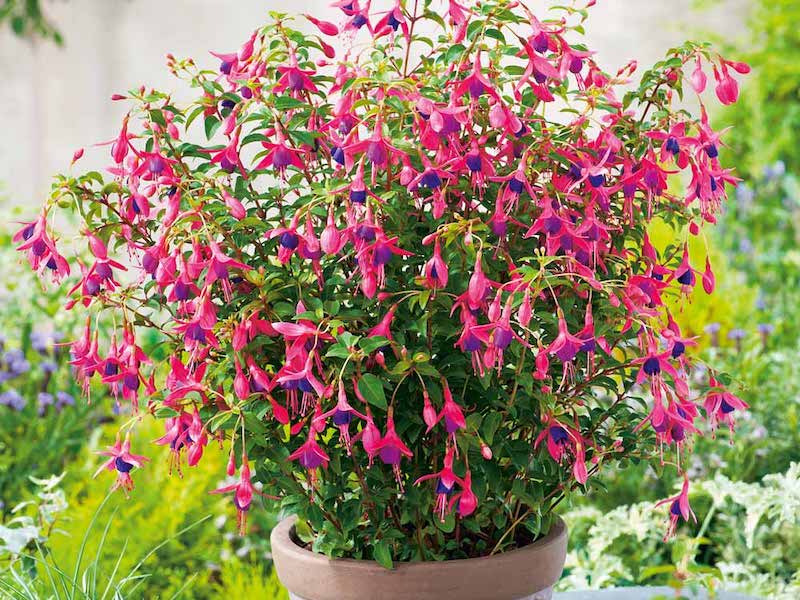
Image: Floramedia
If you’ve ordered Fuchsia plug plants, remove them from the packaging and pot them up straight away. Use slightly larger pots to grow them on a bit more, or plant them straight into window boxes and hanging baskets. Move them into a bright, sheltered spot to grow on.
Garden-ready Fuchsias can be planted straight into your beds and borders as soon as the soil has warmed up in spring. Choose an area with free-draining, fertile soil, and follow these steps:
- Dig a hole slightly larger than the root ball of your plant
- Add well rotted organic matter to the soil
- Place the plant into the hole so that the top of the root ball is level with the soil, and firm in well
- Cover the top of the soil with mulch to aid moisture retention
- Water your plant very well
If you’re planting Fuchsias in containers, use good quality multi-purpose compost and mix in a handful of slow-release fertiliser to feed your plants as they grow.
How to prune Fuchsias
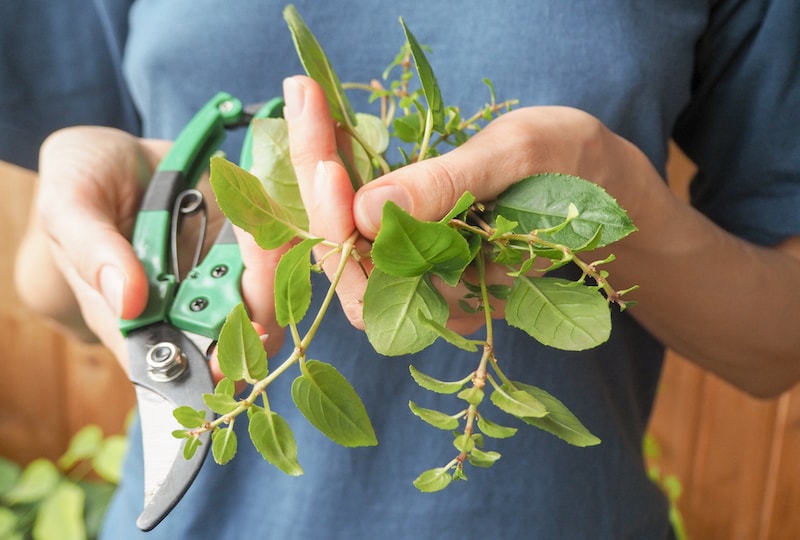
Image: Stanislav71/Shutterstock
Once mature, hardy Fuchsias appreciate a prune every spring to keep them healthy and maintain the desired size. If you’re growing a hedge, allow the plants to reach their final height before you prune them.
Half-hardy Fuchsias are best cut back at the beginning of autumn. Do this when you move them indoors for overwintering.
Follow these tips when pruning your Fuchsias:
- Remove any dead, damaged and diseased leaves and stems
- Take your Fuchsia back to your desired shape and size
- Cut each stem back to just above a healthy bud
- Always use clean equipment when pruning
- Put any diseased foliage on the bonfire or into your household waste, not the compost bin
How to pinch out a Fuchsia
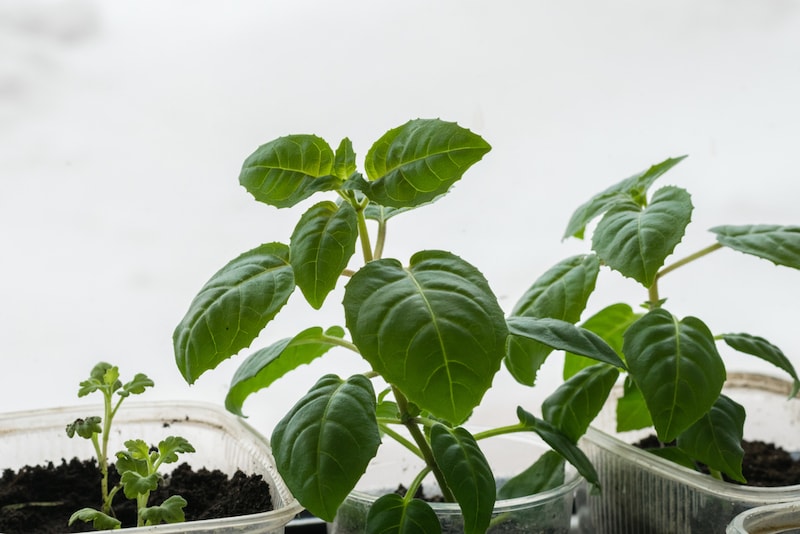
Image: Tatiana Buzmakova/Shutterstock
Both hardy and half-hardy Fuchsias benefit from being ‘pinched out’ in their first year. Do this when they’ve produced multiple true leaves. Use your thumb and forefinger to neatly remove the growing tip, a couple of centimetres below the very top of the main stem. This encourages bushier side growth and eventually greater flower production in the summer.
How to plant a hardy Fuchsia hedge

Image: Lukassek/Shutterstock
Fuchsias make a wonderful informal flowering hedge for sheltered sites with free-draining soil. Hardy Fuchsias die back in very cold winters, so are best used for hedging in the South of the UK and along the west coast of Scotland where winters are relatively mild:
- Mark out a straight line for your hedge
- Dig a deep trench
- Mix well-rotted manure or organic matter into the bottom of your trench
- Plant your Fuchsias, putting them in few centimetres deeper than the root/stem juncture to keep them well anchored
- Mulch very well over the freshly planted roots
- Water your new hedge well to settle the soil
If your hedge gets out of hand a few years after planting, prune the side shoots back to healthy green buds in spring. Fuchsia hedges are, by nature, informal with large arching branches. The fresh green foliage and bright covering of flowers attracts plenty of pollinators during the summer.
Quick guide to growing Fuchsias
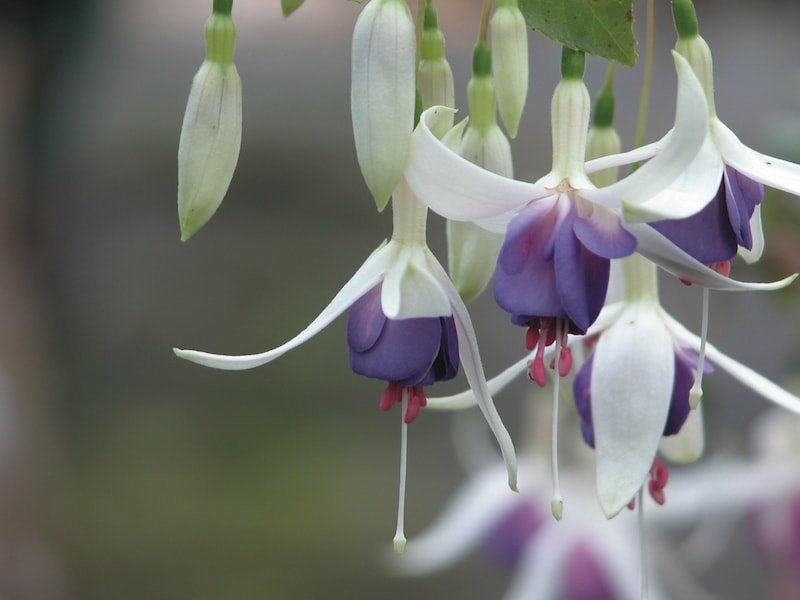
Image: Fuchsia ‘Delta’s Sarah’ from Suttons
Follow these quick tips to keep your Fuchsia plants healthy and productive in the garden:
- Deadhead. Keep removing spent blooms from your Fuchsia plants to keep them in flower for longer.
- Feed. Regularly feeding your plants during growth and flowering gives them the boost they need to put on a good display.
- Fuchsia gall mite. Fuchsias are relatively pest free, although gall mite is a new pest that can impact leaf growth and flowering. Look out for distorted growth around the plant tips. Remove and burn affected foliage, and apply a biological spider mite killer.
- Eat. The flowers and berries are edible! Crystallise the flowers to decorate cakes and pick the dark coloured berries to make into jams or compotes.
We hope we’ve given you plenty of useful tips to help you plant and care for your Fuchsias. Whether you create a hardy hedge or fill your patio with huge double blooms, tag us in your Fuchsia photos using #mysuttonsjourney — we love to see your successes!
Lead image: Fuchsia ‘Pink Elephant’ from Suttons




Very informative and interesting